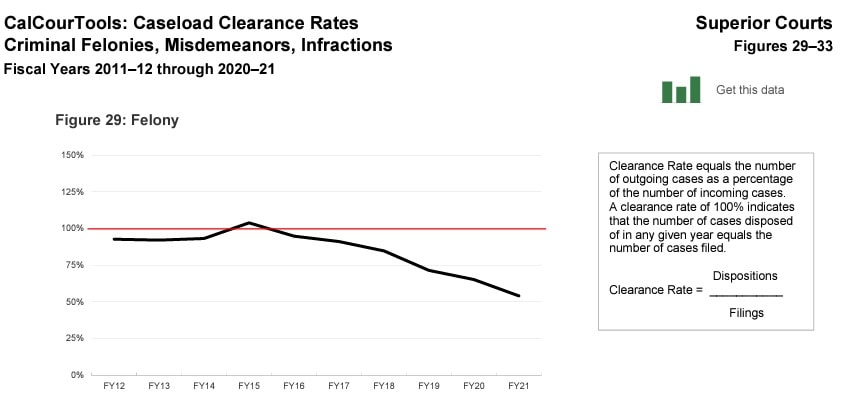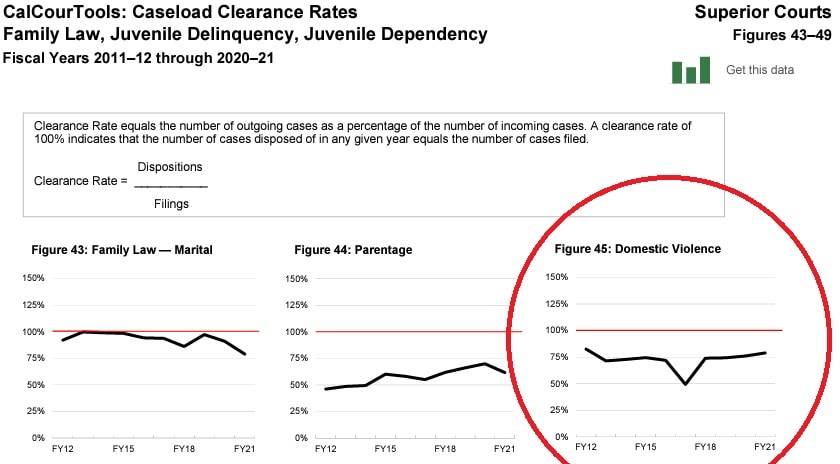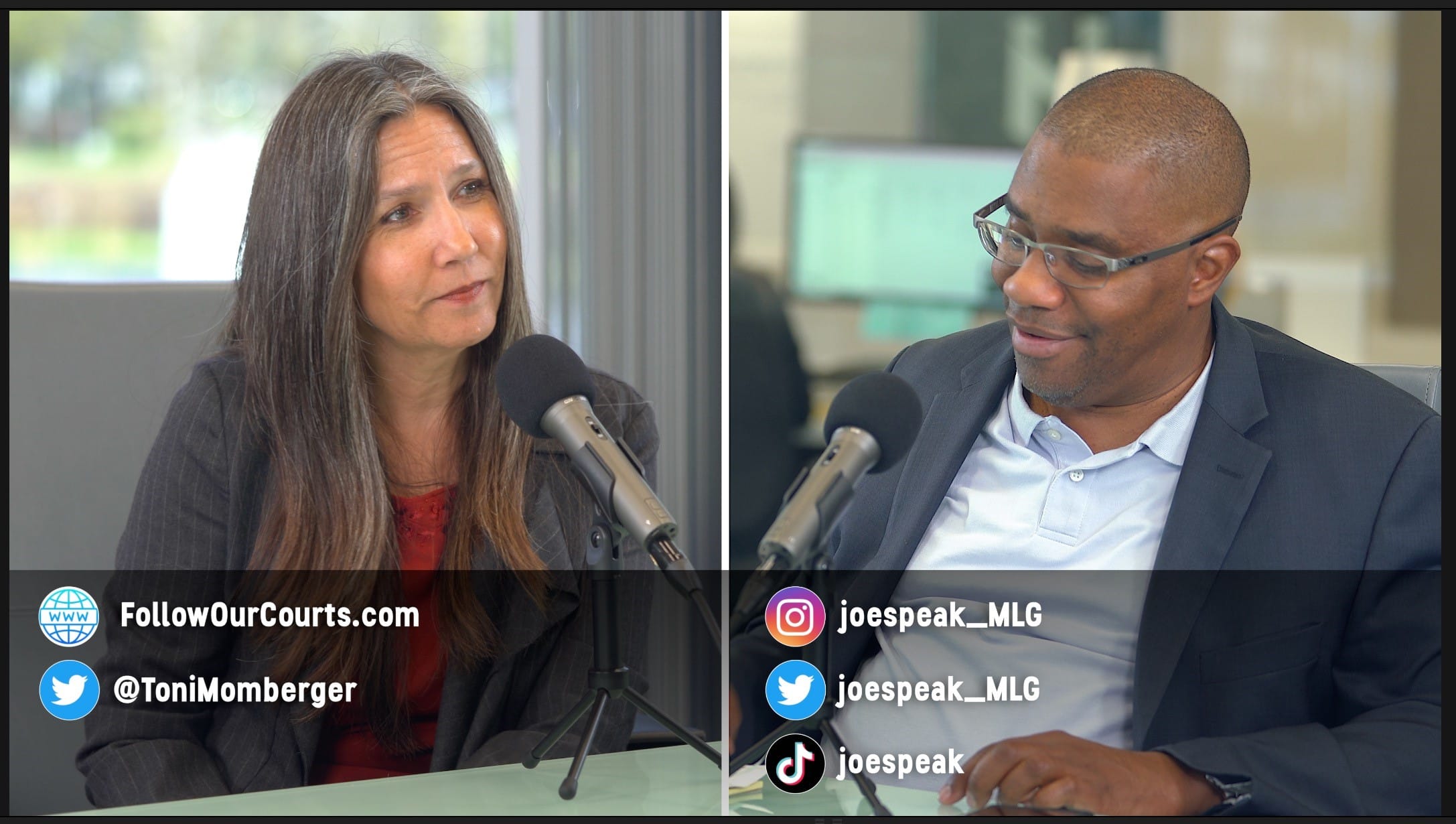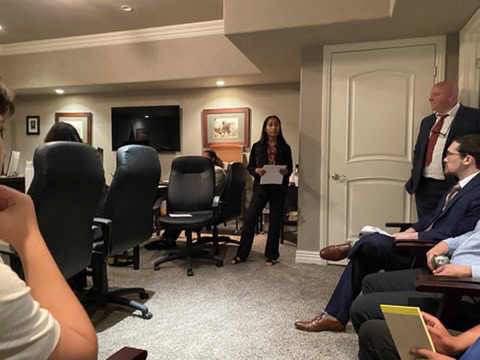EDITOR’S COLUMN
Civil rights attorney Joe Richardson and I grab lunch as often as we can – he adopted my mother as his own many years ago, and by now we really do feel like family. Over plates of pad thai in February we expressed our astonishment over the consequences (to everybody) of Inland Empire courts being, as you will hear me say, “historically, dramatically, shamefully underfunded.”
So we went to his law office, McCune Legal Group, which funds Follow Our Courts, and recorded a podcast about it for his regular show, Joe Speak!
The nutshell
The short version is that we need funding for around 70 more judges over the region. But if we got the judges we needed, we wouldn’t have the courtrooms to put them in. And if we got the courtrooms we needed, we wouldn’t have enough court reporters to support them.
So if you are a resident of the Inland Empire and you are accused of, or the victim of, a crime, your expectations for a speedy trial may be unrealistic.
It’s important to say that things are improving. They absolutely are. But the ability to meet the justice needs of this region is clearly hampered.
The longer version
Here are facts about the Inland Empire supreme courts compared to others in the state.
Let’s start with the judge vacancy crisis. Annually, most counties in the state have around 2,000 case filings per judge, but Riverside and San Bernardino county judges average about 3,000.
I have in my notes from a state-of-the-courts address in 2021 that the Inland Empire makes up 20% of the state but we’re in the bottom 2% for state resources. The state is supposed to budget based on each court’s workload. By my calculations, we represent 12% of the state’s cases.
I’m mentioning the 2020-21 report, which has the previous year's numbers, to illustrate that we were dealing with the cumulative effects of underfunding when the pandemic shut down the courts' operations. We already had a backlog problem.
We also need courtrooms, which we are not getting any time soon. I learned in another 2021 state-of-the-courts address that if a new courthouse was approved today and building started tomorrow, it would take 15 to 20 years to build that new courthouse. Today there is only money for the first step in the process – a feasibility study.
Riverside County has two new courthouses under construction. This is great news, but the last time we asked, that superior court had 72 court reporters and was trying to fill 14 vacancies. Since then more judges were sworn in, which was expected to bring the total need to 90. By the time the new courthouses open in 2024, they will need 116 reporters to fully support the court.

Criminal cases
The number of people becoming court reporters for the government has plummeted, but the law mandates a court reporter be physically in a courtroom for all criminal cases that are felony, family law, juvenile dependency or juvenile delinquency, (even if the reporter is alone because everyone else is attending via Zoom).
San Bernardino County had just over 250,000 case filings in the 2021-22 Judicial Council report, and Riverside County had just under 300,000. Most of those filings, about 200,000 per county, were criminal cases.

Statewide, domestic violence case clearance rates are improving, but they’re very bad. And this is one of the kinds of cases that require a court reporter. In the 2021 address I referenced earlier, I learned the number of these cases went way up during the pandemic.

The podcast
So Joe and I sat down to explore the historic, dramatic and shameful underfunding of the Inland Empire’s justice system, and what it means to us residents.
We talk about a woman who is suing the state for discrimination, because the local court’s backlog is preventing her from getting an expungement she was due six years ago. A conviction for something that isn’t even illegal anymore is preventing her from getting her life on track – from getting a job and a student loan.
We also talked about the optimism in the industry. The state filled several Inland judgeships this year and our funding, usually around 70% of what we need, is closer to 90%. New legislation and technology may address the court reporter crisis.
But justice is a constitutional right, even in the Inland Empire.
Joe and I agreed. When our ability to get justice is delayed, it’s denied; and when justice is denied, we must all rise to demand better.








